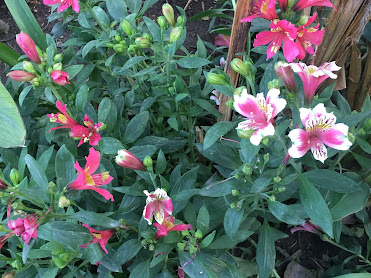Plumeria pudica- (ploo-MEER-ee-a) (pud-EE-kuh). Other names are; Bridal Bouquet, Fiddle Leaf, White Frangipani and Wild Plumeria. Belongs to Apocynaceae, family. Native to Panama, Colombia. USA hardiness zone- 9- 11.
Perennials, shrubs or small Trees. Tropical, tender perennials. Height- 6- 8 feet, spread 4-6 feet. Mildly fragrant, appears as white bouquet. Used as cut flower cuttings, Deciduous.
Easy to grow. Water summers 10 to 15 day, winters 4 weeks. Fertlize during warmer months. Soil ph neutral/ slightly acidic.
Leaves are dark green. Unique fiddle/ spoon-shaped, beauty in both leaves/ flower. Propagation- cuttings, let thee get callous, seeds –store not well. Tie bags to tree for seed.
All photographs are taken by me from Lahore.
 |
| Mildly fragrant, appears as white bouquet. |
 |
| No serious pest/ disease issues. |
 |
| Bloom time, late spring to early winters. |
 |
Bloom color is white/ near white,
with yellow center. |
 |
| Grows under sun to partial/ light shade. |
 |
| Somewhat drought tolerant. Needs well drained soil. |
 |
Unique shape of leaves, like a spoon/ fiddle.
|
Please enjoy reading, viewing and adopting this lovely white bouquet with spoon leaves.
























